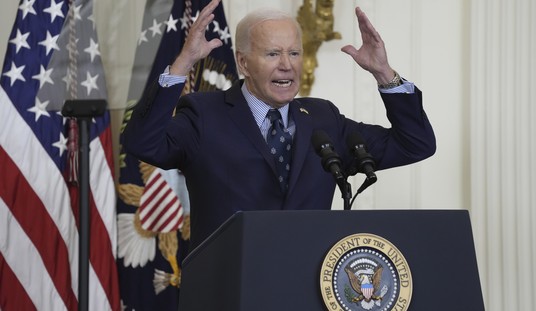We approach, on December 23rd, the centenary of the Federal Reserve System. This anniversary has not gone unnoticed.
The nearly million-strong, militantly Jeffersonian, Campaign for Liberty — the classical liberal counterpart to MoveOn.org — is using the occasion to press for an audit of the Fed as championed in the Senate by Sen. Rand Paul (R-Ky).
Meanwhile, the House of Representatives is calling for a Congressional commission to study the real world effect of various Fed policies over its century-long history. This may be more pragmatical — yet no less incisive. Both previous Congressionally-impelled monetary reforms were impelled by a commission. The Centennial Monetary Commission, HR 1176, sponsored by Joint Economic Committee Chairman Kevin Brady (R-TX), continues to pick up momentum.
The Commission is the right vehicle at the right time. As reported here last month, the Conservative Action Project, and about 40 of its civic leaders, praised this legislation as one if its “critical agenda items” in one of its Memos for the Movement. Full text, with most signatories (including this columnist), reproduced at Conservative Patriot.
In the short space of three weeks since this watershed development Washington’s most Congressionally-influential center-right policy institute, and one of the most justifiably respected, the Heritage Foundation, has weighed in. Important endorsements also have appeared in the Orange County Register and in the New York Post. Rep. Todd Rokita [R-IN4] has added a 26th co-sponsorship.
The Centennial Monetary Commission calls for a bipartisan, bicameral, commission. It contemplates an empirical assessment of the outcomes of various monetary policies engaged by the Federal Reserve System. It is not an exercise in Fed bashing. It is an exercise in objective empiricism.
Nor is it a partisan exercise. Not only is the commission to be equally balanced between Democrats and Republicans, but one Democratic Member of Congress, the well-respected John Delaney (D-Md) already has joined the list of sponsors. More Democrats are likely to engage in this authentically bipartisan, fruitful, exercise … once the melodramatic tussle to defund Obamacare, the continuing resolution, and the debt ceiling, are, at least for the moment, safely behind us.
Recommended
America’s current Alice In Wonderland surrealistic monetary system is an artifact of the Nixon presidency (with a critical assist from Treasury Secretary John Connally, a Democrat). Thus, monetary reform truly is something both parties can embrace. Monetary reform potentially is the most potent factor in resuming robust job creation on a glide path to an equitable prosperity.
Bipartisan? As superpollster Scott Rasmussen learned, almost two years ago, the gold standard is even more popular among the Democratic constituencies of blacks and labor union members than among conservatives, libertarians, and Tea Partiers (where it is very popular indeed).
The gold standard is not, by any means, the focus of the Brady Commission. Nor, however, is gold excluded from the six enumerated monetary policy options to be closely examined. The Bank of England, in its Financial Stability Report No. 13, as noted by Forbes.com columnist Charles Kadlec, compared the “Federal Reserve Note Standard,” with its predecessor Bretton Woods gold-exchange standard and with the classical gold standard. The “Federal Reserve Note Standard” was assessed as inferior to its predecessors. It, therefore, deserves fair consideration. The Brady Commission simply will give all contenders, including gold, a fair forum.
Brady’s brilliantly designed commission last week drew this astute observation from Heritage Foundation’s economist Dr. Norbert Michel:
It’s easy to get distracted with news like the guessing game of who will replace Ben Bernanke. But the more important issue is: What is the U.S. doing with its monetary policy and why?
What we’ve learned about monetary policy since the Fed was created is surely more important than any one Fed chairman candidate’s political problems, but the inner workings of monetary policy have never really been much of a party starter. Though understandable, this lack of interest is most troubling….
…
In fact, maybe it’s time for Congress to formally review the Fed’s monetary policy. A great place to start would be Congressman Kevin Brady’s (R–TX) Centennial Monetary Commission Act of 2013 (H.R. 1176). This bipartisan bill has 25 cosponsors and would simply “establish a commission to examine the United States monetary policy, evaluate alternative monetary regimes, and recommend a course for monetary policy going forward.”
Meanwhile, Heritage’s counterpart for influence and well-earned respect in the libertarian wing of the conservative/classical liberal coalition, the Cato Institute, weighed in. Cato Vice president Dr. James Dorn presented in the Orange County Register this discerning observation:
The 2008-09 financial crisis greatly expanded the power of the Federal Reserve under Chairman Ben Bernanke. Now that his term is ending, the focus is on the choice of a successor. That choice, however, diverts attention from a more serious issue: namely, the institutional flaws in the present U.S. monetary regime and its bias against capital freedom.??…
Markets work best when property rights are well defined and government is limited to its legitimate functions of protecting persons and property. … The U.S. Constitution was designed to prevent erratic money and to enshrine sound money. As Nobel laureate economist Milton Friedman wrote, “We have forgotten that the original Congress prohibited states from emitting bills of credit [ed. Note: Federal Reserve Notes] and gave Congress only the power ‘to coin money, regulate the value thereof, and of foreign coin.’
…
It is time to judge the Fed’s 100-year history and to consider the constitutionality of a pure discretionary fiat money regime. Rep. Kevin Brady, R-Texas, drafted a bill to create a Bicentennial Monetary Commission. That is a step in the right direction. We should assemble the best monetary minds and have a real debate over the fundamental flaws in the Federal Reserve System, not just a debate over who will be the next Fed chairman.
Meanwhile, the New York Post runs not one but two major articles praising the Brady Commission. Gregory Bresiger and John Aidan Byrne write, on September 7, Fed critics demand change with Bernanke Exit:
Rep. Kevin Brady (R-Texas), chairman of the Joint Economic Committee and senior member of the House Ways and Means Committee, says, “In this global economy, a central bank is absolutely essential. But on this 100th anniversary of the Fed, and given the financial crisis we’ve just come through, this is the opportune time to both evaluate the Fed’s performance over the last 100 years and to bring together some of the best minds on identifying what the Fed’s role is going forward in making recommendations to Congress.”
Brady introduced The Centennial Monetary Commission Act, “so we can have a thoughtful, constructive discussion on what role [the Fed] should be going forward. [We are not calling for abolition of the Federal Reserve], we are calling for reforms [at the Fed] that maintain its independence.”
And the editor of the New York Sun, Seth Lipsky, also writes in the Post on September 18, in Money— the crisis Washington’s ignoring:
One of the most amazing stories right now is the failure of either President Obama or Congress to address the monetary crisis. This is the crisis Joe Six-Pack feels when he fills his car with gas or fetches up at the supermarket checkout — or when he has a hard time finding a job.
…
Congress has the chance to use the Fed anniversary to take a serious look at whether the Fed is working the way it was intended. The chairman of the Joint Economic Committee, Rep. Kevin Brady (R-Texas), is pushing a bill to set up a Centennial Monetary Commission. He wants it to be a serious, bipartisan group.
Brady’s bi-partisan commission, as this columnist has implied before, presents as possibly the most long-term important piece of legislation before the 113th Congress. The Commission could be the most portentous legislation since the dramatic Kemp-Roth/Bradley-Gephardt tax rates cuts of the 1980s. Those cuts, together with the Volcker-generated “Great Moderation” in monetary policy, led to an explosion of worldwide economic growth bringing a billion people out of poverty. Not so incidentally, it brought the Dow Jones Industrial Average from 1,000 to 15,000.
The Centennial Monetary Commission continues to gain momentum on the Hill and among thought and civic leaders. This suggests that some in Congress, at last, may be turning their attention to the root cause of the “Growth Gap.” And to its most potent solution: monetary reform.

























Join the conversation as a VIP Member